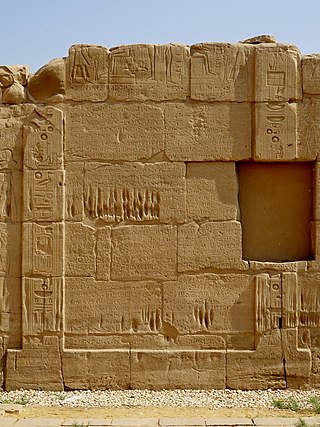Perpetual Peace or Eternal Peace may refer to:
Treaty of Perpetual Peace and similar may refer to:

The Hittites were an Anatolian people who played an important role in establishing first a kingdom in Kussara, then the Kanesh or Nesha kingdom, and next an empire centered on Hattusa in north-central Anatolia. This empire reached its height during the mid-14th century BC under Šuppiluliuma I, when it encompassed an area that included most of Anatolia as well as parts of the northern Levant and Upper Mesopotamia.
Treaty of Paris may refer to one of many treaties signed in Paris, France:
Pax or PAX may refer to:

Mitanni, c. 1550–1260 BC, earlier called Ḫabigalbat in old Babylonian texts, c. 1600 BC; Hanigalbat or Hani-Rabbat in Assyrian records, or Naharin in Egyptian texts, was a Hurrian-speaking state with Indo-Aryan linguistic influences in northern Syria and southeast Anatolia. Since no histories or royal annals/chronicles have yet been found in its excavated sites, knowledge about Mitanni is sparse compared to the other powers in the area, and dependent on what its neighbours commented in their texts.

Pax Britannica was the period of relative peace between the great powers during which the British Empire became the global hegemonic power and adopted the role of a "global policeman".
The Treaty of London or London Convention or similar may refer to:
A vassal state is any state that has a mutual obligation to a superior state or empire, in a status similar to that of a vassal in the feudal system in medieval Europe. Vassal states were common among the empires of the Near East, dating back to the era of the Egyptian, Hittite and Mitanni conflict, as well as ancient China. The use of vassal states continued through the Middle Ages, with the last empire to use such states being the Ottoman Empire.
The Treaty of Edinburgh–Northampton was a peace treaty signed in 1328 between the Kingdoms of England and Scotland.

A peace treaty is an agreement between two or more hostile parties, usually countries or governments, which formally ends a state of war between the parties. It is different from an armistice, which is an agreement to stop hostilities; a surrender, in which an army agrees to give up arms; or a ceasefire or truce, in which the parties may agree to temporarily or permanently stop fighting.

A Treaty of Perpetual Peace between the Tsardom of Russia and the Polish–Lithuanian Commonwealth was signed on 6 May 1686 in Moscow by Polish–Lithuanian Commonwealth envoys: voivod of Poznań Krzysztof Grzymułtowski and chancellor (kanclerz) of Lithuania Marcjan Ogiński and Russian knyaz Vasily Vasilyevich Golitsyn. These parties were incited to cooperate after a major geopolitical intervention in Ukraine on the part of the Ottoman Empire.
Pacification may refer to:

Hattusili III was king of the Hittite empire c. 1275–1245 BC or 1267–1237 BC.
Treaty of Münster refers to two treaties signed in 1648, and forming part of the Peace of Westphalia ending the Thirty Years' War:
Kizzuwatna was an ancient Anatolian kingdom in the 2nd millennium BC. It was situated in the highlands of southeastern Anatolia, near the Gulf of İskenderun, in modern-day Turkey. It encircled the Taurus Mountains and the Ceyhan River. The centre of the kingdom was the city of Kummanni, in the highlands. In a later era, the same region was known as Cilicia.

The Istanbul Archaeology Museums are a group of three archaeological museums located in the Eminönü quarter of Istanbul, Turkey, near Gülhane Park and Topkapı Palace.
The Treaty of Saint-Germain may refer to one of a number of treaties signed at Saint-Germain-en-Laye, as follows:
The Treaty of Perpetual Peace was signed by James IV of Scotland and Henry VII of England in 1502. It agreed to end the intermittent warfare between Scotland and England which had been waged over the previous two hundred years, and, although it failed in this respect, as hostilities continued intermittently throughout the 16th century, it led to the Union of the Crowns 101 years later.
The Pax Romana was a time of peace established by Emperor Augustus during the Roman Empire.

The Egyptian–Hittite peace treaty, also known as the Eternal Treaty or the Silver Treaty, is the only Ancient Near Eastern treaty for which the versions of both sides have survived. It is also the earliest known surviving peace treaty. It is sometimes called the Treaty of Kadesh, after the well-documented Battle of Kadesh that had been fought some 16 years earlier, although Kadesh is not mentioned in the text. Both sides of the treaty have been the subject of intensive scholarly study. The treaty itself did not bring about a peace; in fact, "an atmosphere of enmity between Hatti and Egypt lasted many years" until the eventual treaty of alliance was signed.